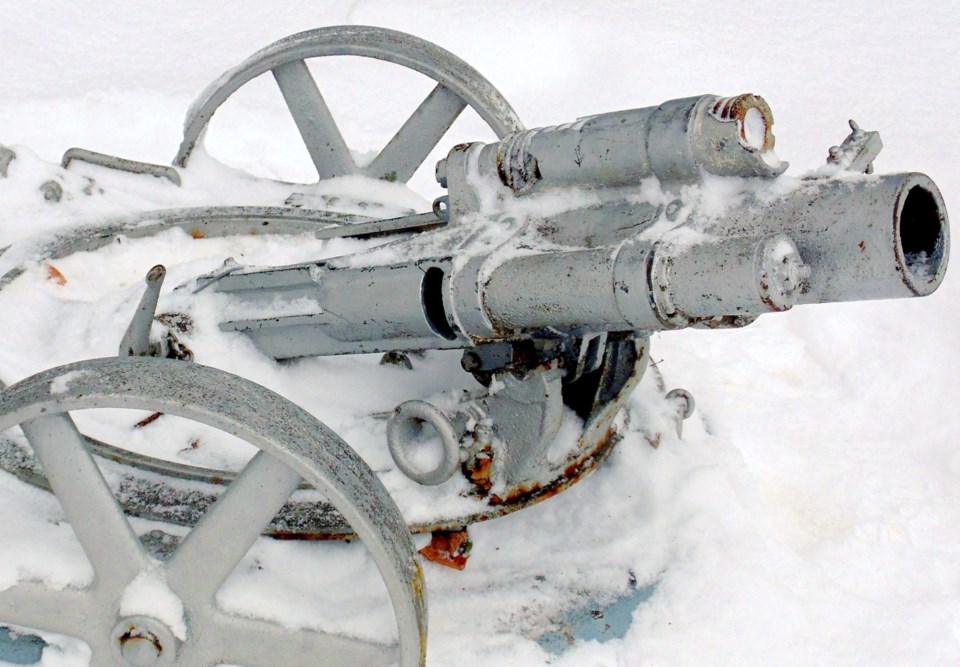A German trench mortar at the Ridgeville cenotaph was damaged by war not by the elements.
A citizens’ group, striving to preserve the heritage character of the site, said the mortar and cenotaph should remain together.
Carolyn Botari said she will take the mortar information to a meeting of with the town. She made a presentation to council last week urging restoration of lead lettering on the cenotaph.
According to research through the Canadian Archives and National War Museum, the group learned the mortar was damaged and captured in a First World War raid on German trenches at Neuville Vitasse in France in 1918.
Recreation director Vickie van Ravenswaay said Monday she is organizing a meeting of town staff, the citizens group, and Branch 613 Royal Canadian Legion members to discuss the cenotaph and mortar.
A military advisor has suggested the town move the mortar indoors to protect it from the weather, the director said. The federal government has offered to give the town another piece to put by the cenotaph.
The citizens’ group says the mortar has a “unique” status.
After the First World War, the federal government offered “spoils of war” to municipalities, schools, reserves and other groups to display.
It retained ownership, but those who received “the spoils” were expected to take care of them.
The Township of Pelham received the mortar by train at the Fenwick station in 1921. It was to go with the cenotaph the township erected in 1920 in memory of 18 men who did not return from the war. About the same time, Welland received two machine guns.
During the Second World War, the Canadian government collected many of the First World War spoils. It melted them down to make war materials for the new conflict.
For some reason, the mortar was overlooked and now remains a rare First World War relic.
The raid at Neuville Vitasse was made overnight on June 23-24, 1918, by two companies of from the 31st Battalion South Alberta Regiment. They intended to undermine the fading morale German troops late in a war, which ended in November 1918.
About 400 Canadians slipped across no man’s land in ground fog and attacked the German trenches.
They killed about 100 of the enemy, left many more casualties and captured even more. They blew up trench mortars and their ammunition.
In the village, they put a Union Jack on a flag pole with a note to demoralize enemy troops.
And the Canadians pulled the 550-pound disabled mortar back to their trenches as a trophy.
In the raid, the Alberta unit lost three officers, 13 soldiers. Four officers and 37 other ranks were wounded. Six soldiers went missing.
Botari said the mortar could be considered a memorial to those who died in the action.



